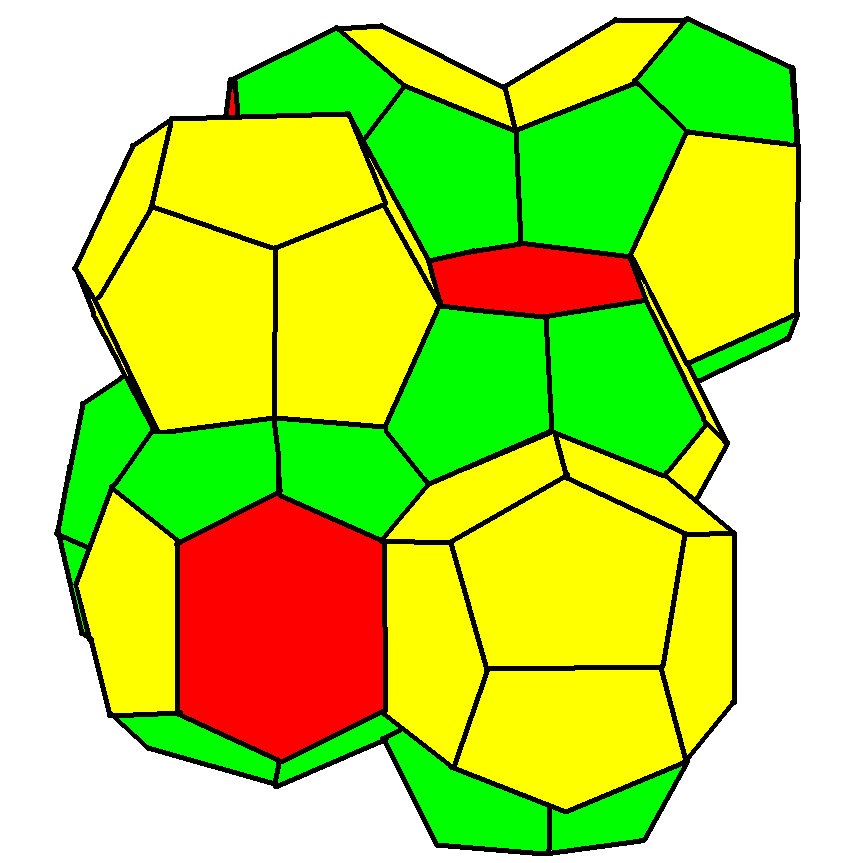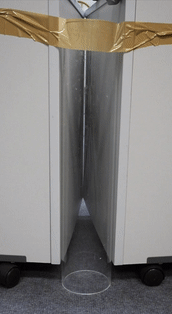|
Denis Weaire
Denis Lawrence Weaire FRS (born 17 October 1942 in Dalhousie, Simla, India) is an Irish physicist and an emeritus professor of Trinity College Dublin (TCD). Educated at the Belfast Royal Academy and Clare College, Cambridge, he held positions at University of California, University of Chicago, Harvard and Yale, ultimately holding professorships at Heriot-Watt, and University College Dublin before becoming, in 1984, Erasmus Smith's Professor of Natural and Experimental Philosophy at TCD.Erasmus Smith's professors of Mathematics Mathematics at TCD 1592–1992 Together with his graduate student Robert Phelan, Weaire came up with a counter-example to |
Fellow Of The Royal Society
Fellowship of the Royal Society (FRS, ForMemRS and HonFRS) is an award granted by the judges of the Royal Society of London to individuals who have made a "substantial contribution to the improvement of natural knowledge, including mathematics, engineering science, and medical science". Fellowship of the Society, the oldest known scientific academy in continuous existence, is a significant honour. It has been awarded to many eminent scientists throughout history, including Isaac Newton (1672), Michael Faraday (1824), Charles Darwin (1839), Ernest Rutherford (1903), Srinivasa Ramanujan (1918), Albert Einstein (1921), Paul Dirac (1930), Winston Churchill (1941), Subrahmanyan Chandrasekhar (1944), Dorothy Hodgkin (1947), Alan Turing (1951), Lise Meitner (1955) and Francis Crick (1959). More recently, fellowship has been awarded to Stephen Hawking (1974), David Attenborough (1983), Tim Hunt (1991), Elizabeth Blackburn (1992), Tim Berners-Lee (2001), Venki Ramakrishn ... [...More Info...] [...Related Items...] OR: [Wikipedia] [Google] [Baidu] |
Weaire–Phelan Structure
In geometry, the Weaire–Phelan structure is a three-dimensional structure representing an idealised foam of equal-sized bubbles, with two different shapes. In 1993, Denis Weaire and Robert Phelan found that this structure was a better solution of the Kelvin problem of tiling space by equal volume cells of minimum surface area than the previous best-known solution, the Kelvin structure. History and the Kelvin problem In two dimensions, the subdivision of the plane into cells of equal area with minimum average perimeter is given by the hexagonal tiling, but although the first record of this honeycomb conjecture goes back to the ancient Roman scholar Marcus Terentius Varro, it was not proven until the work of Thomas C. Hales in 1999. In 1887, Lord Kelvin asked the corresponding question for three-dimensional space: how can space be partitioned into cells of equal volume with the least area of surface between them? Or, in short, what was the most efficient soap bubble foam? This pr ... [...More Info...] [...Related Items...] OR: [Wikipedia] [Google] [Baidu] |
William Rowan Hamilton
Sir William Rowan Hamilton LL.D, DCL, MRIA, FRAS (3/4 August 1805 – 2 September 1865) was an Irish mathematician, astronomer, and physicist. He was the Andrews Professor of Astronomy at Trinity College Dublin, and Royal Astronomer of Ireland, living at Dunsink Observatory. Hamilton's scientific career included the study of geometrical optics, ideas from Fourier analysis, and his work on quaternions which made him one of the founders of modern linear algebra. He made major contributions in optics, classical mechanics and abstract algebra. His work was fundamental to modern theoretical physics, particularly his reformulation of Newtonian mechanics, now called Hamiltonian mechanics. It is now central both to electromagnetism and to quantum mechanics. Early life Hamilton was the fourth of nine children born to Sarah Hutton (1780–1817) and Archibald Hamilton (1778–1819),Bruno (2003) who lived in Dublin at 29 Dominick Street, later renumbered to 36. Hamilton's father, who ... [...More Info...] [...Related Items...] OR: [Wikipedia] [Google] [Baidu] |
Royal Irish Academy
The Royal Irish Academy (RIA; ga, Acadamh Ríoga na hÉireann), based in Dublin, is an academic body that promotes study in the sciences, humanities and social sciences. It is Ireland's premier learned society and one its leading cultural institutions. The Academy was established in 1785 and granted a royal charter in 1786. the RIA has around 600 members, regular members being Irish residents elected in recognition of their academic achievements, and Honorary Members similarly qualified but based abroad; a small number of members are elected in recognition of non-academic contributions to society. Until the late 19th century the Royal Irish Academy was the owner of the main national collection of Irish antiquities. It presented its collection of archaeological artefacts and similar items, which included such famous pieces as the Tara Brooch, the Cross of Cong and the Ardagh Chalice to what is now the National Museum of Ireland, but retains its very significant collec ... [...More Info...] [...Related Items...] OR: [Wikipedia] [Google] [Baidu] |
Cylinder Sphere Packing
Sphere packing in a cylinder is a three-dimensional packing problem with the objective of packing a given number of identical spheres inside a cylinder of specified diameter and length. For cylinders with diameters on the same order of magnitude as the spheres, such packings result in what are called columnar structures. These problems are studied extensively in the context of biology, nanoscience, materials science, and so forth due to the analogous assembly of small particles (like cells and atoms) into cylindrical crystalline structures. Appearance in science Columnar structures appear in various research fields on a broad range of length scales from metres down to the nanoscale. On the largest scale, such structures can be found in botany where seeds of a plant assemble around the stem. On a smaller scale bubbles of equal size crystallise to columnar foam structures when confined in a glass tube. In nanoscience such structures can be found in man-made objects which are ... [...More Info...] [...Related Items...] OR: [Wikipedia] [Google] [Baidu] |
The Pursuit Of Perfect Packing
''The Pursuit of Perfect Packing'' is a book on packing problems in geometry. It was written by physicists Tomaso Aste and Denis Weaire, and published in 2000 by Institute of Physics Publishing ( doi:10.1887/0750306483, ) with a second edition published in 2008 by Taylor & Francis (). Topics The mathematical topics described in the book include sphere packing (including the Tammes problem, the Kepler conjecture, and higher-dimensional sphere packing), the Honeycomb conjecture and the Weaire–Phelan structure, Voronoi diagrams and Delaunay triangulations, Apollonian gaskets, random sequential adsorption, and the physical realizations of some of these structures by sand, soap bubbles, the seeds of plants, and columnar basalt. A broader theme involves the contrast between locally ordered and locally disordered structures, and the interplay between local and global considerations in optimal packings. As well, the book includes biographical sketches of some of the contributors to th ... [...More Info...] [...Related Items...] OR: [Wikipedia] [Google] [Baidu] |
Stefan Hutzler
{{Disambiguation ...
Stefan may refer to: * Stefan (given name) * Stefan (surname) * Ștefan, a Romanian given name and a surname * Štefan, a Slavic given name and surname * Stefan (footballer) (born 1988), Brazilian footballer * Stefan Heym, pseudonym of German writer Helmut Flieg (1913–2001) * Stefan (honorific), a Serbian title * ''Stefan'' (album), a 1987 album by Dennis González See also * Stefan number, a dimensionless number used in heat transfer * Sveti Stefan or Saint Stefan, a small islet in Montenegro * Stefanus (other) Stefanus may refer to: * A variation of the given name Stephen, particularly in regard to: ** Saint Stephen, first martyr of Christianity * St. Stefanus, Ghent, a Catholic church in Belgium dedicated to Saint Stephen * Stefanus Prize, a human ri ... [...More Info...] [...Related Items...] OR: [Wikipedia] [Google] [Baidu] |
Foam
Foams are materials formed by trapping pockets of gas in a liquid or solid. A bath sponge and the head on a glass of beer are examples of foams. In most foams, the volume of gas is large, with thin films of liquid or solid separating the regions of gas. Soap foams are also known as suds. Solid foams can be closed-cell or open-cell. In closed-cell foam, the gas forms discrete pockets, each completely surrounded by the solid material. In open-cell foam, gas pockets connect to each other. A bath sponge is an example of an open-cell foam: water easily flows through the entire structure, displacing the air. A sleeping mat is an example of a closed-cell foam: gas pockets are sealed from each other so the mat cannot soak up water. Foams are examples of dispersed media. In general, gas is present, so it divides into gas bubbles of different sizes (i.e., the material is polydisperse)—separated by liquid regions that may form films, thinner and thinner when the liquid phase ... [...More Info...] [...Related Items...] OR: [Wikipedia] [Google] [Baidu] |
Insulator (electricity)
An electrical insulator is a material in which electric current does not flow freely. The atoms of the insulator have tightly bound electrons which cannot readily move. Other materials—semiconductors and conductors—conduct electric current more easily. The property that distinguishes an insulator is its resistivity; insulators have higher resistivity than semiconductors or conductors. The most common examples are non-metals. A perfect insulator does not exist because even insulators contain small numbers of mobile charges (charge carriers) which can carry current. In addition, all insulators become electrically conductive when a sufficiently large voltage is applied that the electric field tears electrons away from the atoms. This is known as the breakdown voltage of an insulator. Some materials such as glass, paper and PTFE, which have high resistivity, are very good electrical insulators. A much larger class of materials, even though they may have lower bulk resistivit ... [...More Info...] [...Related Items...] OR: [Wikipedia] [Google] [Baidu] |
Amorphous
In condensed matter physics and materials science, an amorphous solid (or non-crystalline solid, glassy solid) is a solid that lacks the long-range order that is characteristic of a crystal. Etymology The term comes from the Greek language, Greek ''a'' ("without"), and ''morphé'' ("shape, form"). In some older articles and books, the term was used synonymously with glass. Today, "glassy solid" or "amorphous solid" is considered the overarching concept. Polymer, Polymers are often amorphous. Structure Amorphous materials have an internal structure comprising interconnected structural blocks that can be similar to the basic structural units found in the corresponding crystalline phase of the same compound. Unlike crystalline materials, however, no long-range order exists. Localized order in amorphous materials can be categorized as short or medium range order. By convention, short range order extends only to the nearest neighbor shell, typically only 1-2 atomic spacings. Medium ... [...More Info...] [...Related Items...] OR: [Wikipedia] [Google] [Baidu] |
Electronic Structure
In quantum chemistry, electronic structure is the state of motion of electrons in an electrostatic field created by stationary nuclei. The term encompasses both the wave functions of the electrons and the energies associated with them. Electronic structure is obtained by solving quantum mechanical equations for the aforementioned clamped-nuclei problem. Electronic structure problems arise from the Born–Oppenheimer approximation. Along with nuclear dynamics, the electronic structure problem is one of the two steps in studying the quantum mechanical motion of a molecular system. Except for a small number of simple problems such as hydrogen-like atoms, the solution of electronic structure problems require modern computers. Electronic structure problem is routinely solved with quantum chemistry computer programs. Electronic structure calculations rank among the most computationally intensive tasks in all scientific calculations. For this reason, quantum chemistry calculati ... [...More Info...] [...Related Items...] OR: [Wikipedia] [Google] [Baidu] |







